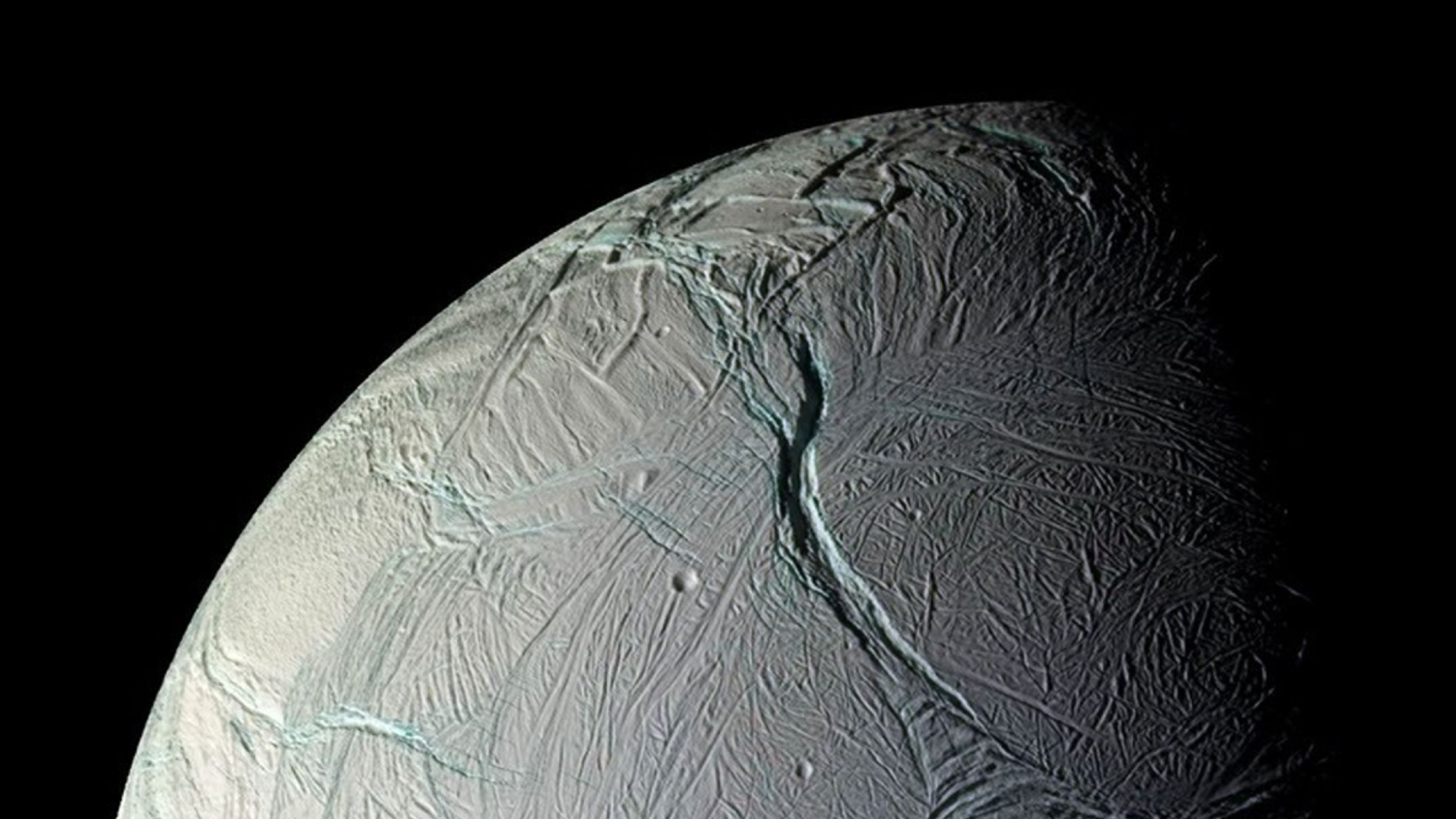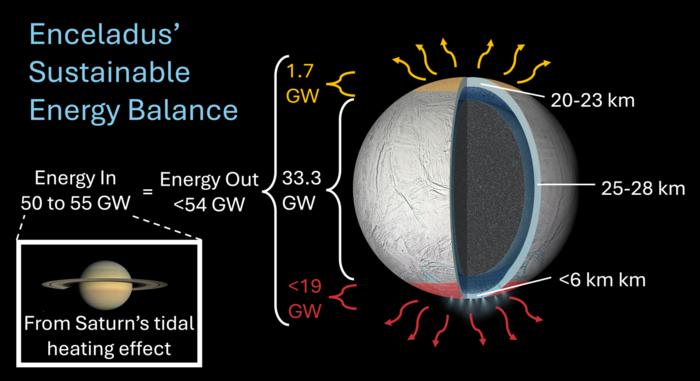Heat leaking from Saturn's ocean moon Enceladus bolsters its case as an abode for life
The finding sees the return of the Cassini mission from the grave, with data it collected in 2005 and 2015 being key to making the discovery.

Excess heat is flowing from the north pole of Enceladus, hinting at a careful energy balance deep that may have kept the subsurface ocean stable over geologically significant timescales, boosting its suitability for life.
One of Saturn's moons, Enceladus has been known to be an active ocean world ever since 2005, when the Cassini mission found giant plumes of water vapour squirting up from the ocean deep below through huge fractures in the surface. These plumes are powered by energy from tidal interactions with Saturn, which flex the moon's interior, subtly squeezing and stretching it and ultimately keeping its interior warm enough for liquid water.
The question of how long Enceladus' ocean has existed is an unanswered one, but with water, heat and the right organic chemistry for life, Enceladus is viewed as a prime target for the search for life beyond Earth.
"Enceladus is a key target in the search for life outside the Earth, and understanding the long-term availability of its energy is key to determining whether it can support life," said study leader Georgina Miles, of the Southwest Research Institute and a Visiting Scientist at the University of Oxford, in a statement.
If Enceladus didn't continually receive enough energy from tidal heating, its ocean would gradually freeze. If it received too much energy, the activity in the ocean would increase, altering its environment perhaps to the detriment of its habitability. Therefore, a careful balance between the energy deposited into the moon by the tidal interaction, and the energy that leaks away through convection up to the surface and into space, is required to ensure stability over hundreds of millions or even billions of years.
Planetary scientists know that heat flows out from the south pole, where the fractures, known as tiger stripes, that produce the plumes are located. However, they thought that Enceladus' north pole was inert.
It seems that they were wrong.
Breaking space news, the latest updates on rocket launches, skywatching events and more!
By comparing measurements from Cassini's Composite Infrared Spectrometer (CIRS) of the temperature of Enceladus' north pole during Saturnian winter in 2005 and what passes for summer on the icy moon in 2015, and then comparing it to predicted temperatures based on modeling, Miles' team found that Enceladus' north pole was seven degrees Celsius (45 degrees Fahrenheit) warmer than expected. This excess heat is flowing out from the ocean that is measured to be 12 to 14 miles (20 to 23 kilometers) beneath the surface at the north pole, and averaging 15.5 to 17.4 miles (25 to 28 kilometers) deep globally. This thick ice shell will make it difficult for any future mission to drill down to the ocean; entering via the tiger stripes might be the best bet, even if it might be more dangerous. A mission to launch in the 2040s is currently being considered by the European Space Agency.
The measured heat flow is 46 milliwatts per square meter, which compared to Earth is two-thirds the heat loss through our continental plates. When measured for the entirety of Enceladus, including the heat flow towards the south pole, the moon is losing 54 gigawatts across its entire surface area, which is a close match for the amount of energy that tidal heating puts into the moon. This careful balance is no coincidence, and implies the ocean has been stable, without freezing solid, for a very long time.
"Understanding how much heat Enceladus is losing on a global level is crucial to knowing whether it can support life," said Carly Howett of both the University of Oxford and the Planetary Science Institute in Arizona. "It is really exciting that this new result supports Enceladus' long-term sustainability, a crucial component for life to develop."
Although Cassini ended its 13-year mission in 2017 when it plunged into Saturn to prevent it from crashing onto and contaminating any of Saturn's moons, it seems that the spacecraft is still making discoveries.
"Eking out the subtle surface temperature variations caused by Enceladus' conductive heat flow from its daily and seasonal temperature changes was a challenge, and was only made possible by Cassini's extended missions," said Miles. "Our study highlights the need for long-term missions to ocean worlds that may harbor life, and the fact the data might not reveal all its secrets until decades later after it has been obtained."
The findings were published on Nov. 7 in Science Advances.

Keith Cooper is a freelance science journalist and editor in the United Kingdom, and has a degree in physics and astrophysics from the University of Manchester. He's the author of "The Contact Paradox: Challenging Our Assumptions in the Search for Extraterrestrial Intelligence" (Bloomsbury Sigma, 2020) and has written articles on astronomy, space, physics and astrobiology for a multitude of magazines and websites.
You must confirm your public display name before commenting
Please logout and then login again, you will then be prompted to enter your display name.

